My intention is to post one blog a day separated into three sections, ERA, iPhone and Personal, in order to cover all aspects of my trip to Masaya.
ERA
The proposed shopping trip today to obtain a 3G SIM and 3G dongle did not take place but it has been arranged for tomorrow so hopefully these will be easily purchased.
During my first visit to the Masaya volcano I was able to observe a reasonable 3G signal which is a positive sign that 3G testing either with a Pay & Go SIM or 3G dongle will prove fruitful.
iPhone
There has been a positive interest in the apps I have developed regarding a field tool and hopefully tomorrow I will be able to demonstrate the feasibility of such.
I spent a time today with Guillermo’s team taking VLF readings and can see how this is a laborious task for him. The procedure requires one person taking a reading with the VLF meter, one recording compass orientation of the readings and another recording the data onto paper. Each reading location is recorded on a GPS device which has to be uploaded to a spreadsheet where the recorded data is then manually entered against the relevant location.
The prototype application currently has the potential to greatly reduce the time taken to process the recorded data. It allows the user to create new recording locations by dropping a pin on the map at their current location and from there to enter reading data, a free text note and if required a photo. As each data recording is made over time at the same location all readings can be viewed in tabular form along with drill down to the free text notes and photo pertaining to the selected location.
The greatest advantage is the ability for the application to provide the user with the means to export the data via FTP thus allowing the data to be easily imported electronically into Excel,
Where locations, or stations are known and used regularly to take readings it is possible to have their coordinates pre stored in a Google Earth KML format which the application can read. Once on the device it is possible to turn on user location services with heading information allowing the application to visually guide the user to a specific location / station where a reading can be taken.
Of course this is all based on the quality of connectivity to the 3G service and hopefully tomorrow will reveal if this is possible.
Also as the researchers have a far more powerful GPS monitor used as a base point for all their recordings it will be possible to check the accuracy of the iPhone GPS.
Personal
The usual start to every day is for a small group to go to the local shops to get provisions for the day and then off to the volcano.
Each volunteer gets the opportunity to take part in the setting up of equipment used to record the various readings to be taken. The first and most important one is the base GPS point that gives the researchers a known positive GPS location that can be used at a later time to post translate the GPS recordings of the roaming teams.
At the same time Mel sets a sulphation plate on a tree nearby that are left in place and change over time while being exposed to the gases being emitted from the volcano. They are collected at a later date and analysed back in the lab.
Before we make our way up to the volcano Mike gives a brief talk about a tree nearby named cochlospermum and the kind of environment it likes to live in.
It is also pleasant to hear the variety of birds singing around us giving a musical accompaniment to our work.
The first view into the volcano is spectacular it is not until you stand at the crater’s edge can you appreciate the size of it. From deep within the “mouth of hell”, so named by Friar Francisco de Bobadilla in 1529, comes a never ending plume of acrid gas that burns your nose when breathing.
It is reported by park rangers that a few weeks back a loud bang came from the crater and since then the amount of gas being emitted is far less than only three weeks ago suggesting debris has fallen into the hole creating a blockage which could ultimately cause a far bigger explosion.
Looking at the side of the crater that is on the verge of collapse it is easy to see how this amount of rock fall could case a substantial blockage with the resulting eruption that would surely follow in time!
It is very noticeable that once on the volcano there is little or no shade making for very hot conditions to work in. Added to this the danger from the gas meaning most of the time you should be wearing a gas mask. This is OK as it at least stops you choking on gas but when hiking over the terrain with equipment on your back you find yourself gasping for air which is restricted by the mask.
Sometimes, well most of the time it is hard to believe we are still on Earth and not some other planet!
One thing that is amazing to see and totally unexpected is the presence of man in this hostile environment. We are here with gas masks and to take scientific measurements and for the most part in restricted areas closed off to the public. Yet even here there is litter, discarded bottles and plastic bags, admittedly not that many but still odd to find it here.
The researchers are dedicated to observing the environment and fastidious in cleaning up as they go and the park rangers too have a sense of wanting to preserve a natural environment. Which leaves either the occasional tourist that goes off track or local bad lads that are reported to come up here at night, but why here of all places?
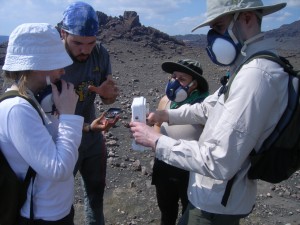
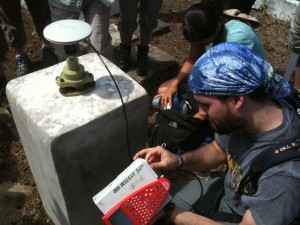
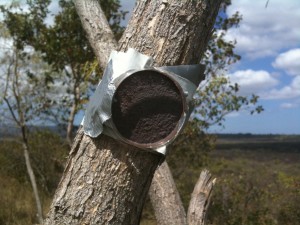
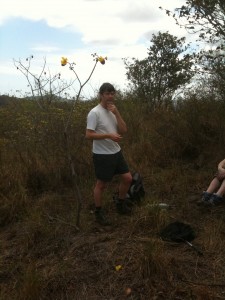
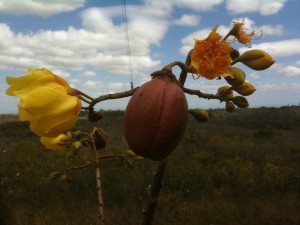
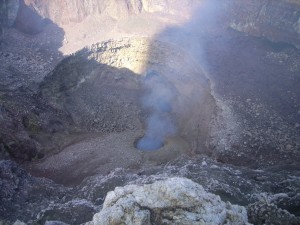
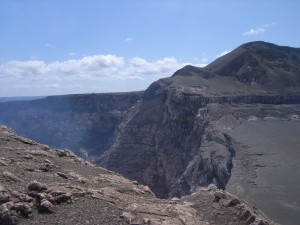
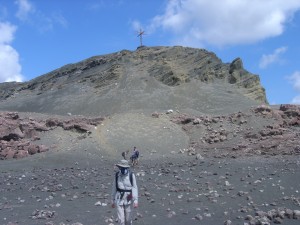
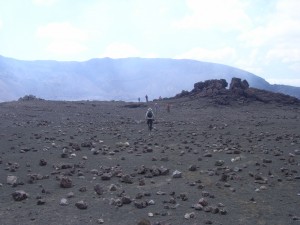
Thanks for the great blog post Paul! keep us updated. Great photos too 🙂